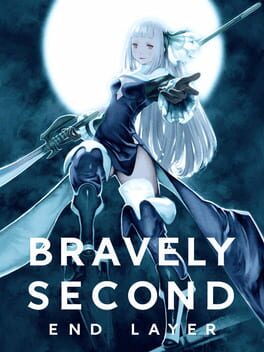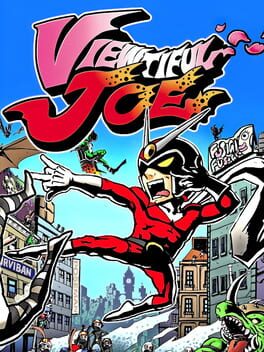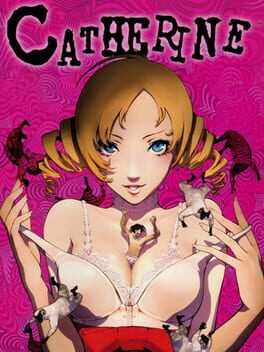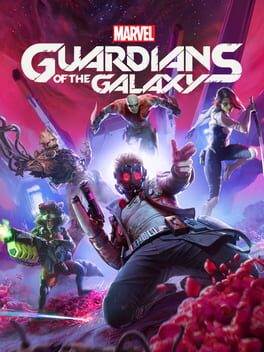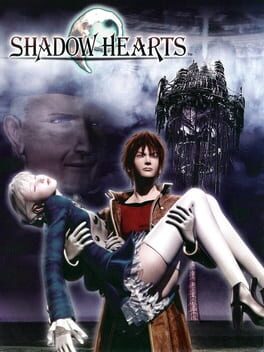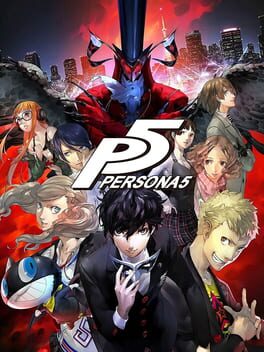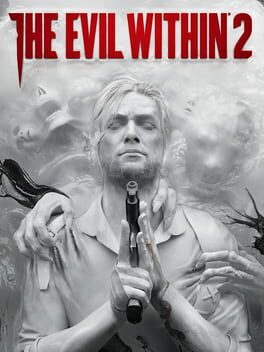CoupdeGravy
Bio
Nothing here!
Badges

Gamer
Played 250+ games

2 Years of Service
Being part of the Backloggd community for 2 years

Best Friends
Become mutual friends with at least 3 others

Liked
Gained 10+ total review likes

Noticed
Gained 3+ followers

N00b
Played 100+ games
Favorite Games
298
Total Games Played
012
Played in 2024
038
Games Backloggd
Recently Played See More
Recently Reviewed See More
An endearing cast, uniformly brilliant performances, and several hype QTEs are dampened by a visually unimaginative world with combat that stops being engaging quite early.
In effect you're doing the same thing in XVI's combat as in most other FFs, attacking with your strongest moves and healing when your HP is low. The other ones give you things to think about and manage though, inside and outside of battles. What's not ideal for a combat system meant to entertain for 50-60 hours is that, during fights, it's never a question of "which move is best for this enemy/situation?", but always "which move isn't in cooldown atm?"
Action combat can definitely be designed to entertain for as long as this game takes, but I can't think of any systems that manage that for the full length of an RPG while being devoid of meaningful customisation options or enemy types that demand you adjust your approach. (It's weird that they didn't go with elemental affinities given how many FF summons are associated with the elements). I imagine people who have played NG+ or Final Fantasy Mode will have a better idea of how deep the combat can get, but I was never given a reason to plumb its depths during my initial playthrough, and I do believe it's on the game to incentivise exploration of its mechanics.
With neither a consistently engaging battle system, nor MP, status effects, party members, junctions, gambits, or materia, you can get away with finding a build that drains boss HP fast, then never again thinking about anything except where the red marker on the map is.
In terms of pacing, it feels pretty similar to XIII in that it's run ahead>fight>run ahead>fight. The maps being more elaborate here than in XIII doesn't add much variety to the pacing. Nor did the towns. I didn't much want to explore these towns, but the game explored them and their mundane problems anyway during countless side quests distinguishable only by their cut scenes. Story developments having a visible effect on the world was cool but often the changes saw settlements going from drab to drab in a different way.
The performances in XVI are about on par with those in XII, with many of Clive's relationships feeling grounded and genuine. The chemistry between him and the Hideaway crew allows for some fun dynamics, and these proved the highlight of the experience for me. That said, it's a shame that many of these relationships are Clive-centric. Perhaps this was inevitable given that he's the only proper party member, but I wish we could've seen Mid and Jill interact, for example.
There are a couple of scenes where the game gives you a glimpse of the party you could have had, and I lamented that this game's cast was the one they relegated to the sidelines so they could go full action instead of offering the traditional party set-up. Having more characters to customise or play as would definitely have helped the combat hold my attention. The interactions between the Hideaway crew elevate the experience so much, I can only imagine how much more entertaining the between-cutscenes portions of the game would've been with more pals more often.
In effect you're doing the same thing in XVI's combat as in most other FFs, attacking with your strongest moves and healing when your HP is low. The other ones give you things to think about and manage though, inside and outside of battles. What's not ideal for a combat system meant to entertain for 50-60 hours is that, during fights, it's never a question of "which move is best for this enemy/situation?", but always "which move isn't in cooldown atm?"
Action combat can definitely be designed to entertain for as long as this game takes, but I can't think of any systems that manage that for the full length of an RPG while being devoid of meaningful customisation options or enemy types that demand you adjust your approach. (It's weird that they didn't go with elemental affinities given how many FF summons are associated with the elements). I imagine people who have played NG+ or Final Fantasy Mode will have a better idea of how deep the combat can get, but I was never given a reason to plumb its depths during my initial playthrough, and I do believe it's on the game to incentivise exploration of its mechanics.
With neither a consistently engaging battle system, nor MP, status effects, party members, junctions, gambits, or materia, you can get away with finding a build that drains boss HP fast, then never again thinking about anything except where the red marker on the map is.
In terms of pacing, it feels pretty similar to XIII in that it's run ahead>fight>run ahead>fight. The maps being more elaborate here than in XIII doesn't add much variety to the pacing. Nor did the towns. I didn't much want to explore these towns, but the game explored them and their mundane problems anyway during countless side quests distinguishable only by their cut scenes. Story developments having a visible effect on the world was cool but often the changes saw settlements going from drab to drab in a different way.
The performances in XVI are about on par with those in XII, with many of Clive's relationships feeling grounded and genuine. The chemistry between him and the Hideaway crew allows for some fun dynamics, and these proved the highlight of the experience for me. That said, it's a shame that many of these relationships are Clive-centric. Perhaps this was inevitable given that he's the only proper party member, but I wish we could've seen Mid and Jill interact, for example.
There are a couple of scenes where the game gives you a glimpse of the party you could have had, and I lamented that this game's cast was the one they relegated to the sidelines so they could go full action instead of offering the traditional party set-up. Having more characters to customise or play as would definitely have helped the combat hold my attention. The interactions between the Hideaway crew elevate the experience so much, I can only imagine how much more entertaining the between-cutscenes portions of the game would've been with more pals more often.
This review contains spoilers
(Written before the release of Royal, which I haven't played)
Persona games are typically lengthy affairs, but of the four Persona games I've played, only 5 left me feeling that it had mostly wasted the 106 hours I'd given it. I'm not sure whether this was down simply to diminishing returns or a loss of charm in the transition to more realistic character models, but the balance of hours spent to memorable moments was way off. Though the quality of life improvements made the title smoother to play than a buttered piano, and the combat system took a pair of defibrillators to turn-based encounters, the meandering storytelling and comparatively shallow cast rendered the whole experience something akin to socialising with a mannequin in designer clothing.
Persona 5 has its superbly designed main cast complete their arcs shortly after their introductions, after which they settle into static background roles. Though they can be explored further in their social links, these exist in a vacuum divorced from the main narrative. As such, 5 lacks the depth of character that Persona 3 was able to accomplish by having its party members develop not only alongside the story, but each other as well. Whereas Mitsuru and Yukari's bond developed throughout 3, characters like Ann and Makoto in 5 orbit the protagonist and never interact meaningfully with one another past a certain point.
Likewise, only the game's first arc truly gripped me, with its grounded subject matter and personal stakes taking me by surprise. Unfortunately, this turned out to be my last surprise, as the narrative soon abandoned such trappings in favour of increasingly unengaging villains with generic motives. I think Persona 5's inelegant writing can best be epitomised in the twist involving Joker faking his death. As with so many other key moments in the game, its impact is dulled massively by its contrived nature necessitating a tediously long-winded explanation.
The dungeon's designs were also so long-winded that I found myself missing the monotony of Persona 3's Tartarus. At least in 3 the player is rarely required to pay attention while wandering its dungeon's labyrinthine corridors. 5 meanwhile repeatedly asks for the player's attention before very stylishly squandering it with puzzles that serve only to prolong the busywork. I must admit though that the mosaic puzzle in Futaba's dungeon was a nice glimpse into the unrealised potential of the game's palaces.
For as negative as I've been, I do feel that there's a tight and terrific game buried somewhere beneath Persona 5's reams of reiteration and self-indulgences, just waiting for a ruthless editor to dig it out. As I await The Royal, I can't help but hope Atlus remove as much as they add.
Persona games are typically lengthy affairs, but of the four Persona games I've played, only 5 left me feeling that it had mostly wasted the 106 hours I'd given it. I'm not sure whether this was down simply to diminishing returns or a loss of charm in the transition to more realistic character models, but the balance of hours spent to memorable moments was way off. Though the quality of life improvements made the title smoother to play than a buttered piano, and the combat system took a pair of defibrillators to turn-based encounters, the meandering storytelling and comparatively shallow cast rendered the whole experience something akin to socialising with a mannequin in designer clothing.
Persona 5 has its superbly designed main cast complete their arcs shortly after their introductions, after which they settle into static background roles. Though they can be explored further in their social links, these exist in a vacuum divorced from the main narrative. As such, 5 lacks the depth of character that Persona 3 was able to accomplish by having its party members develop not only alongside the story, but each other as well. Whereas Mitsuru and Yukari's bond developed throughout 3, characters like Ann and Makoto in 5 orbit the protagonist and never interact meaningfully with one another past a certain point.
Likewise, only the game's first arc truly gripped me, with its grounded subject matter and personal stakes taking me by surprise. Unfortunately, this turned out to be my last surprise, as the narrative soon abandoned such trappings in favour of increasingly unengaging villains with generic motives. I think Persona 5's inelegant writing can best be epitomised in the twist involving Joker faking his death. As with so many other key moments in the game, its impact is dulled massively by its contrived nature necessitating a tediously long-winded explanation.
The dungeon's designs were also so long-winded that I found myself missing the monotony of Persona 3's Tartarus. At least in 3 the player is rarely required to pay attention while wandering its dungeon's labyrinthine corridors. 5 meanwhile repeatedly asks for the player's attention before very stylishly squandering it with puzzles that serve only to prolong the busywork. I must admit though that the mosaic puzzle in Futaba's dungeon was a nice glimpse into the unrealised potential of the game's palaces.
For as negative as I've been, I do feel that there's a tight and terrific game buried somewhere beneath Persona 5's reams of reiteration and self-indulgences, just waiting for a ruthless editor to dig it out. As I await The Royal, I can't help but hope Atlus remove as much as they add.
For as visually striking and emotionally rousing as The Evil Within 2's final few stages were, since beating the game I struggle to remember large portions of the journey leading up to them. Where the first title's disjointed design and vaguely janky feel combined with its creatively eerie enemy roster and all-over-the-place stage selection to form a wild ride rounded out by rough edges, its follow-up felt like a far safer, mundane jaunt that did little to stick out from the myriad alternative horror experiences available.
While there was fun to be had in the game's semi-open world, and its scavenging gameplay loop enticed me to scour its abandoned houses and car parks, I can't help but shrug at the bland suburban backdrop utilised for most of the game. Although occasional setpieces offered less mundane environs, even these felt frequently derivative, with the gory art exhibition being reminiscent of the 2001 film, The Cell.
Compared to the smorgasbord of destinations that Sebastian barrelled through in his first outing (ranging from European towns to abstract hellscapes and flooded cities), it's no small wonder that the pavements and driveways of 2 feel so pedestrian. Similarly, while the original had the nightmarish screeching spider lady, Laura, the Anima ghost that appears in 2, while somewhat spooky in her sporadic appearances, felt too generic in terms of design to inspire true terror at any point (cool controller gimmick aside).
Ultimately 2 lacked the unrestrained energy and everything-but-the-kitchen-sink approach that characterised the uneven original, resulting in a game that was only excellent in its closing moments. In smoothing out the kinks of 1, 2 lost not only the lows of its forebear, but the highs too, resulting in an experience so smooth that its contents slipped my mind almost immediately.
While there was fun to be had in the game's semi-open world, and its scavenging gameplay loop enticed me to scour its abandoned houses and car parks, I can't help but shrug at the bland suburban backdrop utilised for most of the game. Although occasional setpieces offered less mundane environs, even these felt frequently derivative, with the gory art exhibition being reminiscent of the 2001 film, The Cell.
Compared to the smorgasbord of destinations that Sebastian barrelled through in his first outing (ranging from European towns to abstract hellscapes and flooded cities), it's no small wonder that the pavements and driveways of 2 feel so pedestrian. Similarly, while the original had the nightmarish screeching spider lady, Laura, the Anima ghost that appears in 2, while somewhat spooky in her sporadic appearances, felt too generic in terms of design to inspire true terror at any point (cool controller gimmick aside).
Ultimately 2 lacked the unrestrained energy and everything-but-the-kitchen-sink approach that characterised the uneven original, resulting in a game that was only excellent in its closing moments. In smoothing out the kinks of 1, 2 lost not only the lows of its forebear, but the highs too, resulting in an experience so smooth that its contents slipped my mind almost immediately.
